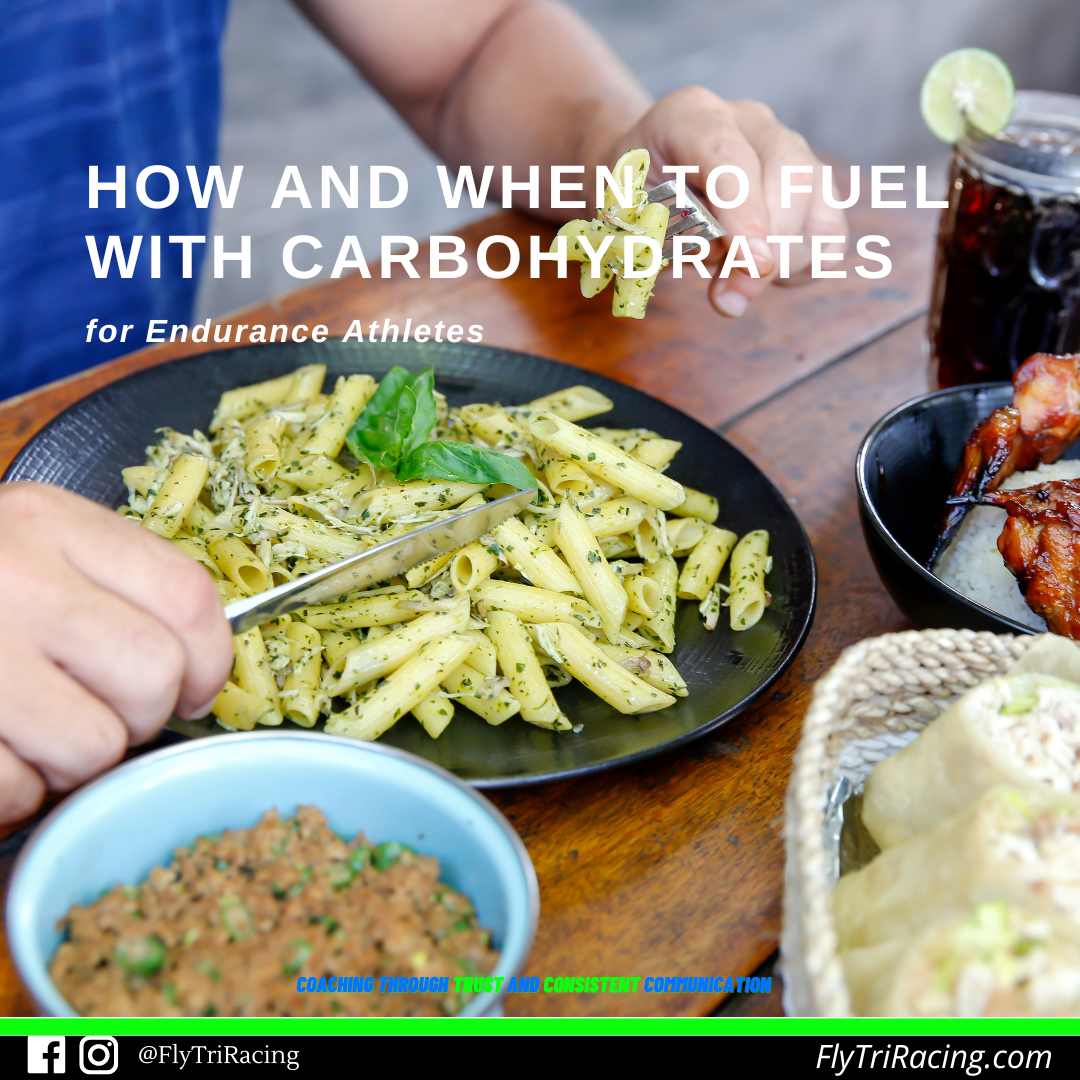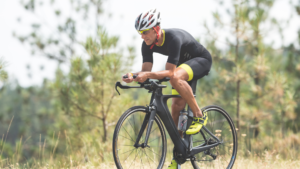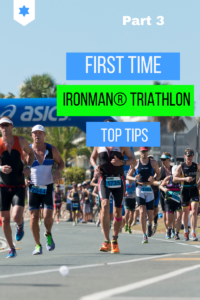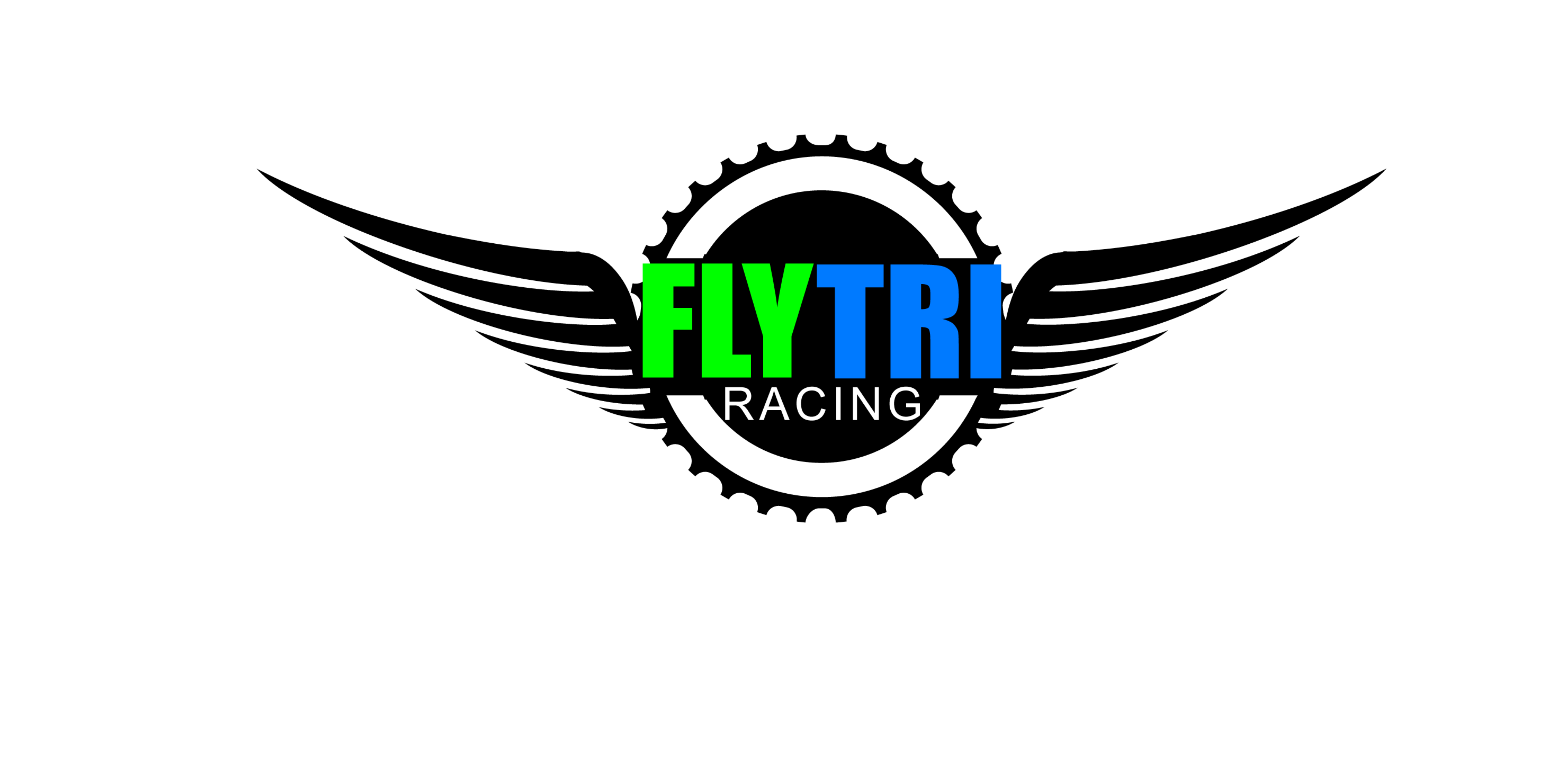In my coaching over the past thirteen years the most common problem I have seen with endurance athletes is either under-fueling in a race or not practicing their fueling plan during training so their gut is adapted by race day. There may be several reasons for this, but one reason for sure is a lack of knowledge. Admittedly, doing the math initially for all the macros you need can be confusing or difficult. Secondly, over the last few years carbohydrates have come to be viewed in an unfair negative light. Most athletes do not realize how many carbs they actually need. The actual number may seem too high but even then they still bonk before the end of the race.
In my previous article, I covered the importance of carbohydrates and the key advantage they have over fat is that they can provide a greater yield of ATP (Adenosine Triphosphate) per volume of oxygen to the mitochondria. This means carbs are way more efficient in providing energy than fat as a main fuel source. In this article I will discuss how and when endurance athletes need to fuel with carbohydrates.
Below I show an adapted table that we will review from an article in the Medicine and Science in Sports and Exercise produced by the Academy of Nutrition and Dietetics Dietitians of Canada in 2016.
Daily needs for fuel and recovery
Low to moderate training volume
Your daily need for carbohydrates depends on the frequency and/or intensity of your training. The table outlines four different levels: light, moderate, high, and very high.
Light to moderate training may occur most in your transition period in-between seasons or during recovery periods; or for those short on time with an hour or less to devote to training.
These light sessions are low intensity with about 45 minutes in zone 1 or low in zone 2. These sessions can also be skill-based sessions such as swim drills, or bike handling drills. Light training typically requires about 3-5 grams of carbs per kilogram of body weight. While moderate training, about an hour a day, requires about 5-7 grams per kilogram of body weight.
If a person weighs 180 pounds then divide 180 by 2.2 to get the body weight in kilograms: 81.8 kg. Then multiply by 3-7 grams based on your estimated need for light to moderate training. 81.8 x 3 grams = 245 and 81.8 x 7 = 572.6. Thus, this person needs betweens 245-573 grams of carbohydrates per day when doing light to moderate training training.
For this type of light to moderate training, sports nutrition products such as sugary sports drinks, gels, chews, etc., should be avoided. Rather it’s better to focus on nutrient-dense carbohydrates such as sweet potatoes, oats, quinoa, and a whole bunch of other vegetables. In fact, many of the most nutrient-dense foods are high in carbohydrates.
Highly nutrient dense carbohydrates for endurance athletes.
An important skill you will need to develop is estimating how many grams of carbs you are consuming. You will need to get familiar with food labels and measuring portions. I recommend starting with tracking and measuring your nutritional intake until you have a greater sense of what your caloric demands are.
Pictured below is the label of Nature’s Path Organic Oats. A ½ cup portion weighing 40 grams includes 27 grams of carbohydrates. 1 gram of carbohydrates equals about 4 calories. (27 * 4) = 108 calories coming from carbohydrates and the remainder coming from protein and fat. This includes 4 grams of fiber so it will help you have greater satiety for longer. This is a great choice for those long rides, losing weight, or racing as long as you have plenty of time to digest.
Image of Nature’s Path Organic Oats food label.
High to Very High Training Volume
When it comes to doing high volumes of endurance training, say 1-3 hours per day or very high, > 4-5 hours, you will need 6-12 grams of carbohydrates per day.
Carbohydrate dense foods are still the preferred choice for daily meals to ensure nutrient needs are being met first. However, during training some supplementation may be needed to ensure glycogen depletion is being replaced. With higher training volumes, more simple carbohydrate sources will usually be needed in the form of liquids, gels, etc.
These simple carb sports nutrition products typically include both maltodextrin and fructose as the source of the carbohydrates. Maltodextrin is very high on the glycemic index, as it is made up of long chains of glucose that are easily absorbed. Maltodextrin is preferred over just simple sugar because it has a lower osmolarity. If you drank straight sugar while trying to bike or run you would surely run into intestinal problems that would not be pleasant.
Fructose is another source of carbohydrates included in sports nutrition products. Combining sources can increase absorption and maybe reduce gastric distress since maltodextrin and fructose have different absorption pathways. This greatly increases the carbs available to you when combined. Current research, according to Hawley, Wong, and Jeukendrop, shows that with a 2:1 ratio of maltodextrin to fructose it’s easier to absorb carbohydrate intake greater than 60g of carbohydrates an hour during training and racing.
Acute Fueling Strategies
General Fueling Up
For general fueling before training and races that are less than 90 minutes you don’t necessarily need to have a carb loading strategy, but you do need to ensure you are eating enough between sessions to ensure optimal recovery. For example, if you have a 15k run or a 40K bike time trial the following day that may take 60-90 minutes, then your dinner should include 7-12 grams of carbohydrates / kilogram of body weight. Be sure your carbohydrates are low in fiber the night before to avoid distress the next day. As always, you should practice your nutrition during your training blocks. For short races like a 3k to 5k carbohydrate loading the night before isn’t a necessity.
Carbohydrate loading
Carbohydrate loading 3-4 days before may be necessary for events that last longer than 90 minutes with carb amounts of as much as 10-12 grams per kilogram of body weight. To ensure you are able to match these targets of 10-12g/kg, snacks and sports drinks consumed daily during this time can help. You may gain a few pounds, but this will be water weight that you will lose when you start sweating.
Speedy Refueling
Triathletes and some high level runners are often doing two or more training sessions a day and if you have two fuel-demanding sessions a day within 8 hours of each other you need to be able to refuel with fast-acting carbohydrates. Let’s say you had a 3K swim with fast-paced work in the morning before work and then about 5-6 hours later during your lunch break you had a tempo run. Between these sessions 1-1.2 g/kg amount between these sessions would be required. Using our example of an athlete weighing 180, this would mean 81-98 grams (324-392 calories) of carbohydrates between sessions. This, of course, can be spread out over that period of time.
example of refueling between sessions for endurance athletes
Pre-event Fueling
It is generally important to consume some carbohydrates before intense sessions lasting longer than 45 minutes or longer endurance sessions of greater than 60 minutes. The general rule outlined in our table chart above states that 1-4 hours before you train you need 1-4g/kg/carbohydrate. For example, if your race starts at 8am and you eat your breakfast at 5am, you will want to aim for 3 grams of carbohydrates per kilogram. For someone who weighs 82 kg or 180 pounds this works out to 246 grams of carbohydrates. This will ensure you have optimal glycogen stores ready to go.
The chart below is an illustration of what you could have before a race. This shows approximately how much a person weighing 82 kg or 180 lbs should have starting 3 hours before the race. Notice that I didn’t say eat this all at once within 15 minutes. You could also substitute out those for another quick fueling source, like a gel. Once again you want to practice with this during training or a race that doesn’t matter as much to you.
example of pre event fueling 3 hours before
During Event Fueling < 45 and 45-75 min duration
When it comes to fueling during training sessions and races that last less than 45 minutes you do not need a specific amount of carbohydrates, unless you feel it may help. For events lasting 45-75 minutes small amounts are recommended. Additionally, a growing number of studies are showing mouth swishes or rinses can help stimulate parts of the brain and decrease one’s perception of effort and delay fatigue.
During Event Fueling 1+ hours
For events lasting intensely of 1-2 hours and of 2-3 hours or more in a quasi steady state a fueling plan is necessary. You will want to go back and review our article series on hydration. When it comes to carbohydrates, most people can only store about 1600-2000 calories worth of carbohydrates, which is why so many people hit the “wall” around mile 20 or earlier in a marathon. A V.02 max or a metabolic test can show you exactly how many carbohydrates you are going through at a certain target (heart rate, power, pace).
For most people the average is to try to consume 50-60g/carbohydrate per hour, especially for a 2-3 hour race/ However more research has shown you may want to put that to 90 grams or even higher, especially for those ultra-long endurance events lasting over 3 hours.
When consuming high amounts of carbohydrates like this, the best mixture is a 2:1 ratio of glucose to fructose as this allows faster absorption from multiple transporters. Also, to reach your carbohydrate intake goals this can be done through fluid, semi-solids (gels, chews, etc.) or solids. However, solids may slow down fluid absorption.
We do know the gut can be highly trainable so your fueling must be practiced in order to avoid GI stress and so you have time to refine your fueling strategy. Novices who are not used to consuming so many carbohydrates should start with a low range of consumption and build their way as their gut tolerance adapts. Also, when it comes to running you may want to start with ⅓ to ½ of the carb fueling you would do for the bike.
Conclusion
The most serious issue most athletes face in training and racing is underfueling. Knowing how much you actually use can help you see the value of fueling wisely with carbohydrates. And understanding how carbohydrates can help you recover sooner between sessions and reach the finish line faster could be a big boost to your performance as an athlete.
ABOUT WILLIAM RITTER
William Ritter, from Tyler Texas is the Head Coach at Fly Tri Racing. He is a TrainingPeaks Level 2 Accredited Coach, Ironman U, Tri Sutto Coaching Certified, USA Triathlon Coach with focus areas in Long course, Short course, and Youth & Junior’s, USA Cycling, and USA Track and Field Level 2 Endurance Certified Coach and USATF Cross Country Specialist. He specializes in coaching triathletes and runners of all abilities. Ritter’s coaching is detailed and based on the individual athlete blending the art and science of coaching. To learn more about Ritter and personal coaching visit www.flytriracing.com or send email to flytriracing@gmail.com.
Works Cited
Academy of Nutrition and Dietetics, et al. “Nutrition and Athletic Performance.” Medicine & Science in Sports & Exercise, vol. 48, no. 3, 2015, pp. 543-568.
Hawley, John A., et al. “Carbohydrates for Training and Competition.” Taylor and Francis Online Journal of Sport Sciences, vol. 29, no. Issue sup1: Supplementary Issue: IOC Conference on Nutrition in Sport, 25-27, 2011, Pages S17-S27.
Jeukendrup, Asker E. “A Step Towards Personalized Sports Nutrition: Carbohydrate Intake During Exercise.” Sports Med, no. 2014; 44(Suppl 1), 2014, pp. 25-33, https://www.ncbi.nlm.nih.gov/pmc/articles/PMC4008807/.
Jeukendrup, Asker E., et al. “CARBOHYDRATE MOUTH RINSE: PERFORMANCE EFFECTS AND MECHANISMS.” Sport Science Exchange, no. 118, 2013, https://www.gssiweb.org/sports-science-exchange/article/sse-118-carbohydrate-mouth-rinse-performance-effects-and-mechanisms#articleTopic_10.
Tazzini, Nicola. “Maltodextrin, fructose, endurance sports, and performance.” Tuscany Diet, 2 December 2013, https://www.tuscany-diet.net/2013/12/02/maltodextrin-fructose-endurance-sports/. Accessed 4 February 2022.




